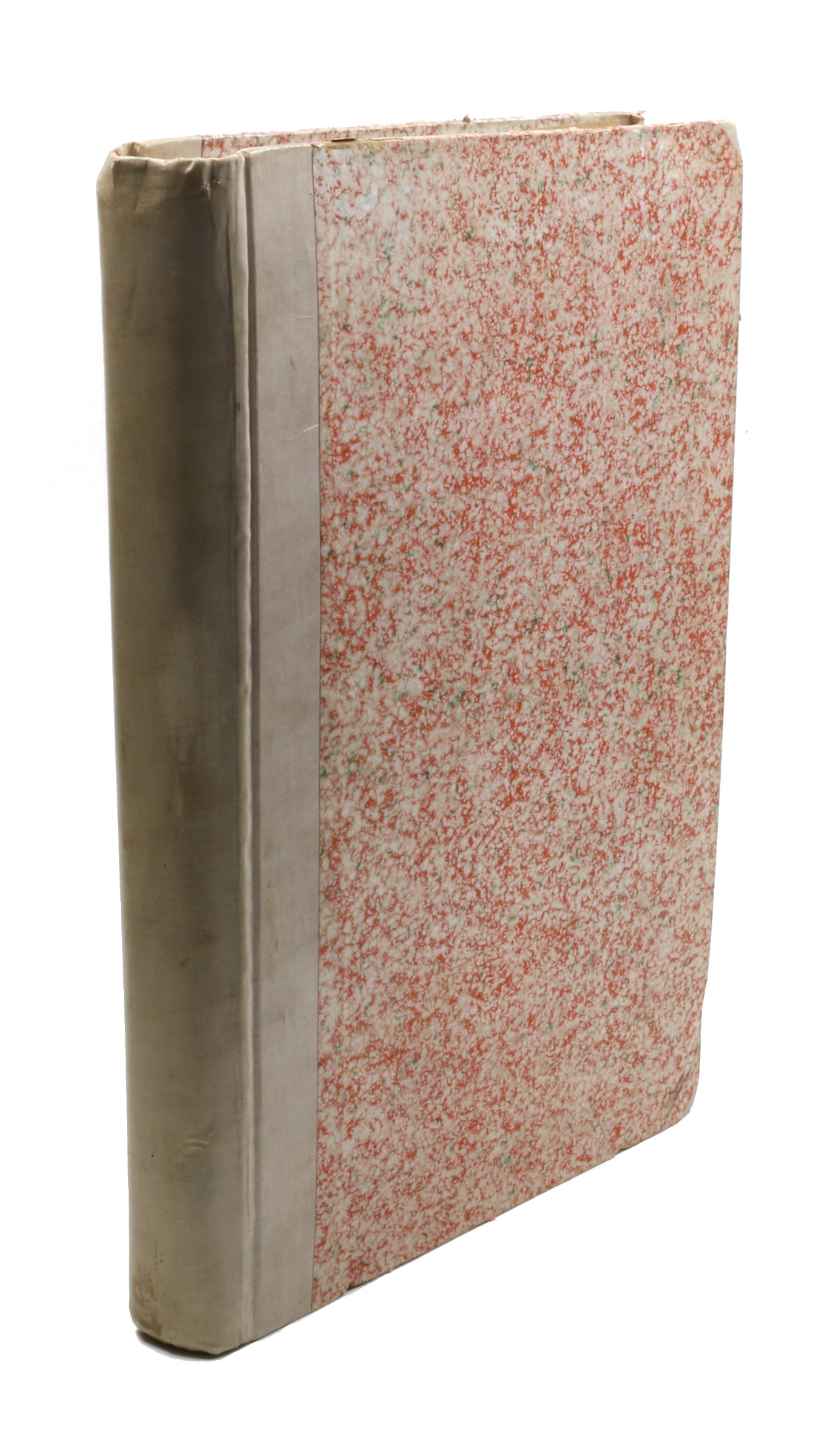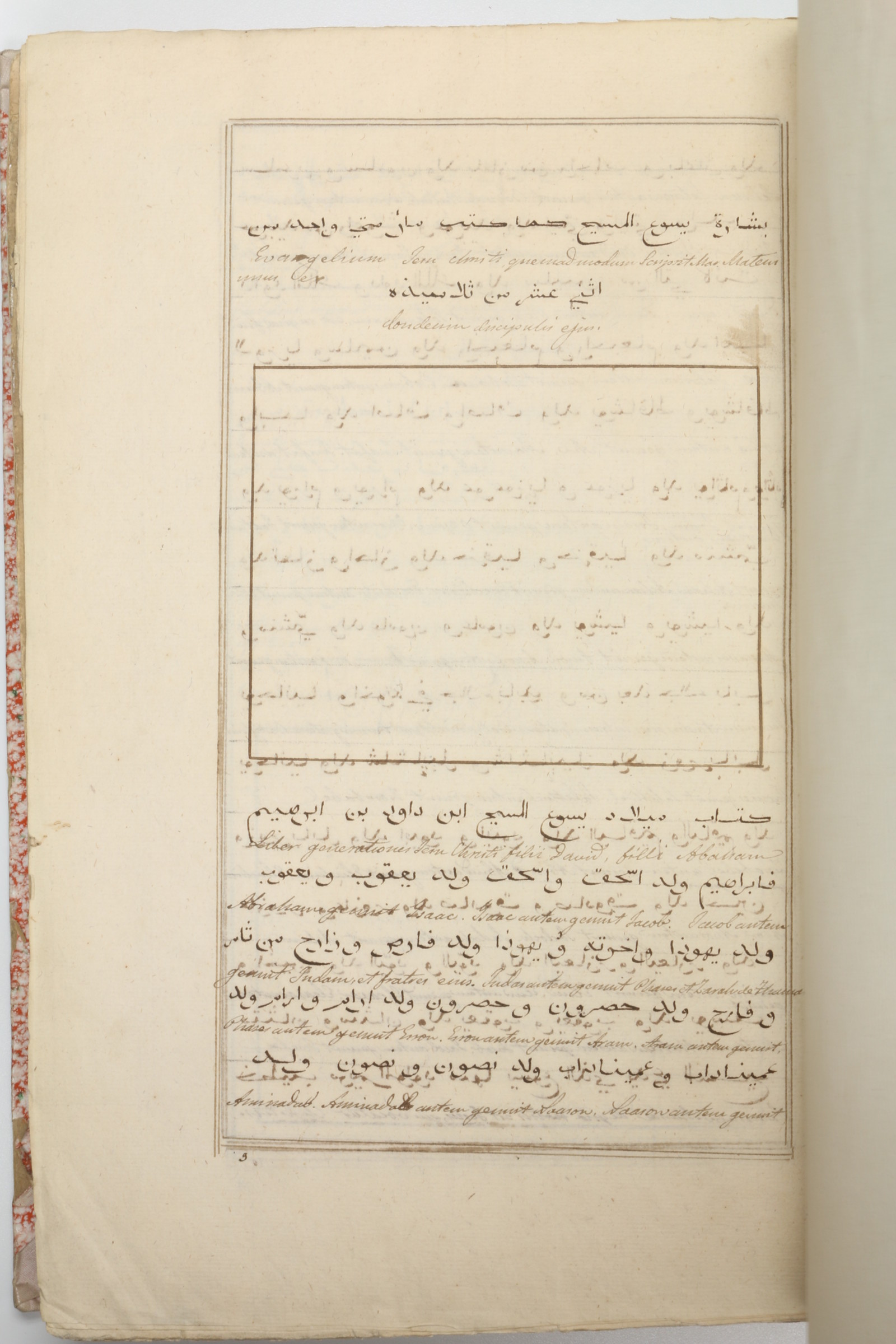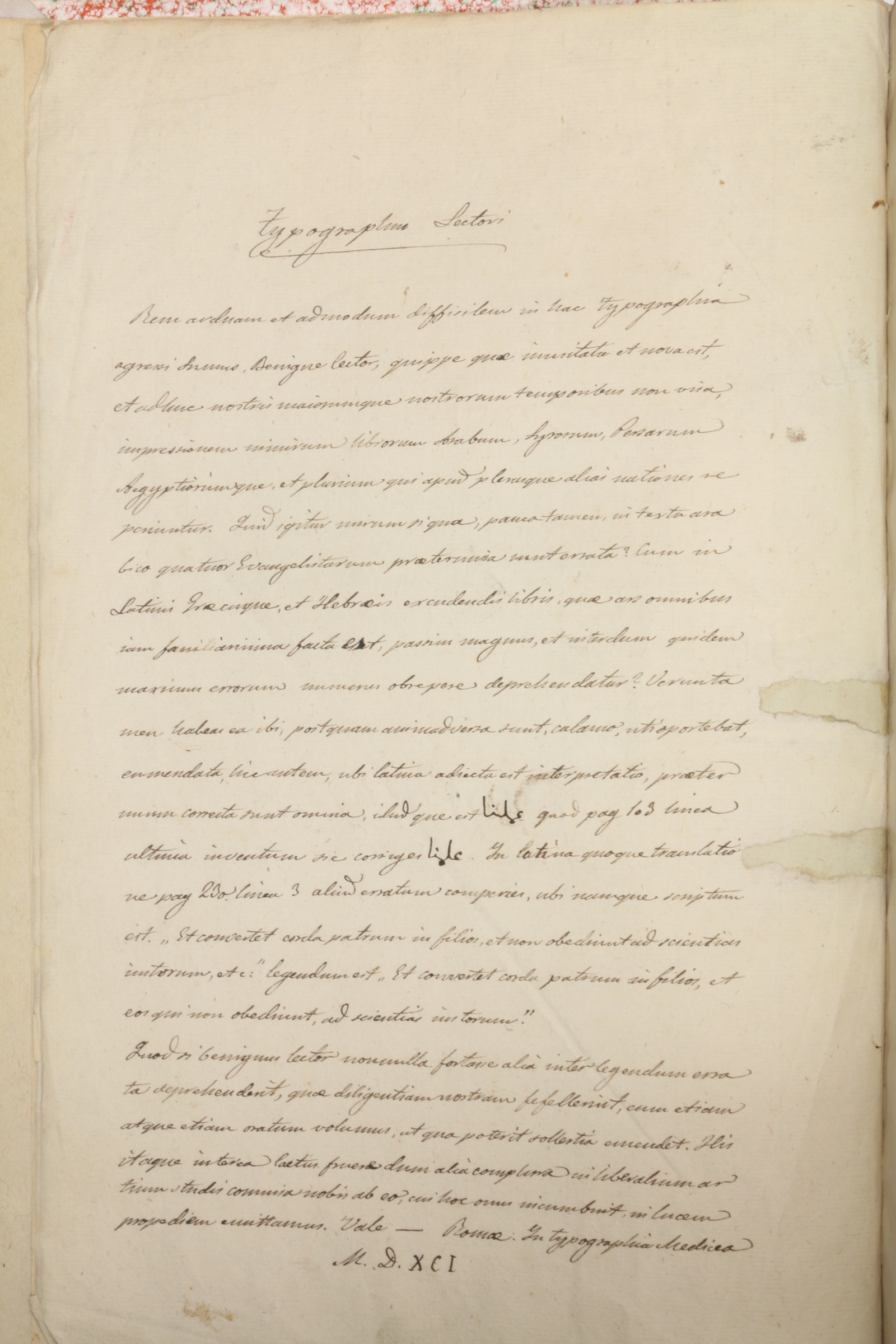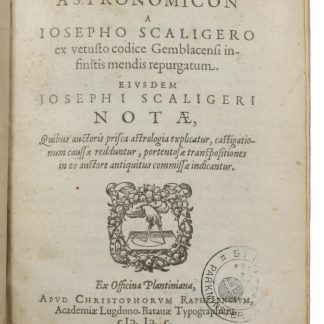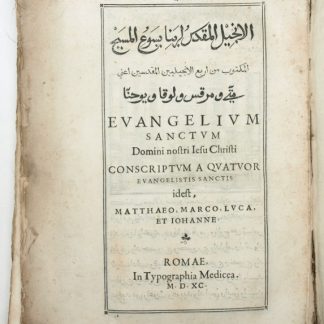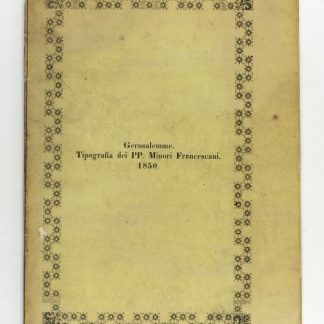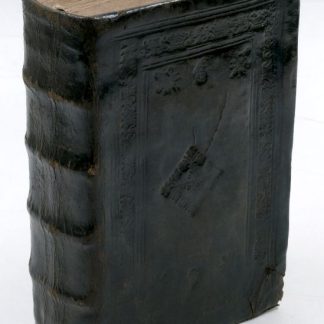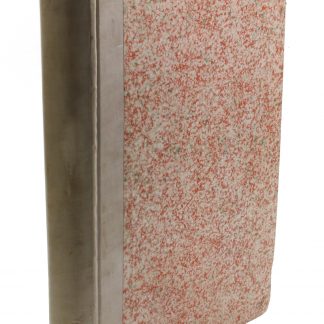The first Gospel printing in the interlinear Arabic and Latin version
[Evangelium Sanctum Domini nostri Jesu Christi conscriptum a quatuor evangelistis sanctis.
Folio (242 x 342 mm). 19-442, 447-450 and 455-456 pp., with pp. 9-18, 443-446 and 451-454, 457-462 and the final leaf supplied in 18th century manuscript. With 138 (instead of 149) text woodcuts by Leonardo Parassole after Antonio Tempesta. 19th-century half cloth with marbled covers.
€ 8,500.00
The first Gospel printing in the interlinear Arabic and Latin version, prepared at the same time and printed by the same press as the first Arabic-only Gospel. These were the first works ever produced by Ferdinando de' Medici's "Medicea" press, founded by Pope Gregory XIII to spread the word of Christ in the Orient. Supervised by the able scholar Giovambattista Raimondi (1536-1614), its strength lay in oriental, especially Arabic, printing. After Raimondi's death, the press relocated to Florence.
The Arabic text is printed in Robert Granjon's famous large fount, generally considered the first satisfactory Arabic printing type; as all early printed editions of the Arabic Gospels, it is based on the Alexandrian Vulgate (cf. Darlow/M. 1636). The Latin version is by Leonardo Sionita. The work begins with page 9, without a title-page or any preliminary matter at all: "the intended prefatory matter was apparently never published" (Darlow/M.); these first eight pages were not supplied until the 1619 re-issue. The present copy lacks the first five leaves and eight leaves at the end, all of which have been supplied in Latin and Arabic manuscript by an 18th century hand. Occasional browning; some worming to gutter (occasionally touching text as well as woodcuts); severe edge defects to the first few printed leaves; final printed leaves remargined; several severely duststained.
Darlow/Moule 1637. Mortimer 64 (note). Streit XVI, p. 866, no. 5138.

